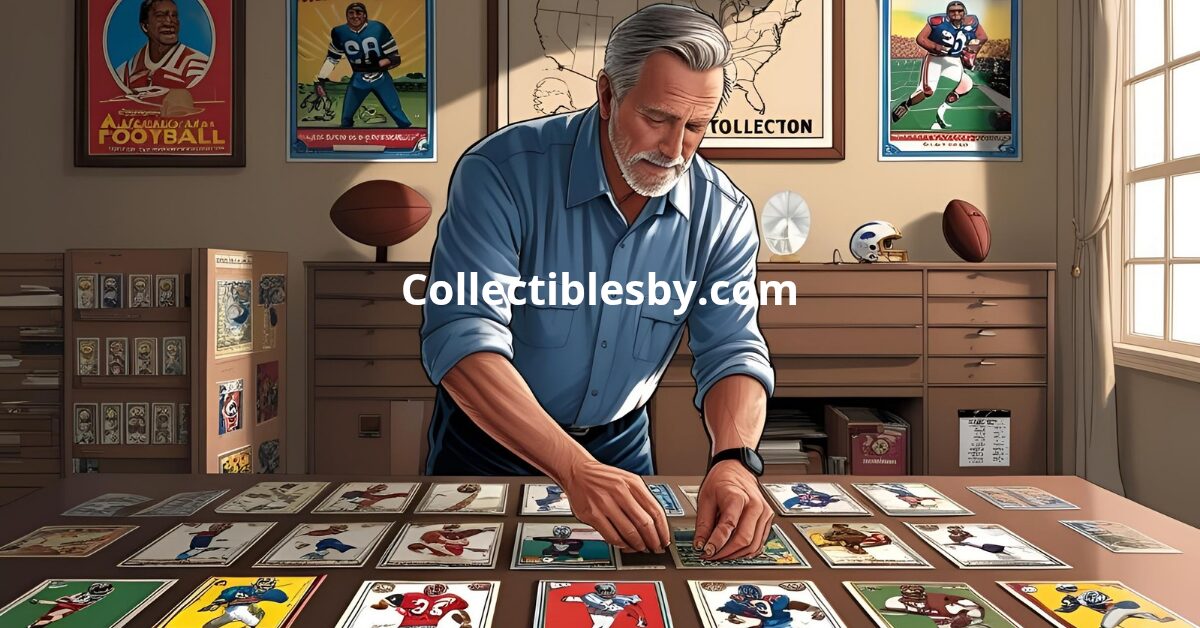The worn cardboard box, tucked beneath his bed, was Leo’s sanctuary. Inside, nestled amongst crumpled tissues and forgotten toys, resided his treasure: a collection of football cards. Not just any cards, but a curated assortment of legends, rookies, and journeymen, each a tiny portal to a universe of gridiron glory.
Leo wasn’t your typical collector. He wasn’t obsessed with chasing the elusive rookie card of the next superstar, nor did he care much for gaudy, over-hyped inserts. His passion lay in the stories. Each card, with its faded photograph and sometimes-scrawled statistics, whispered tales of grit, determination, and fleeting moments of brilliance.
There was the 1978 Joe Montana rookie card, a relic handed down from his grandfather, its edges softened by decades of handling. The card, with its grainy image of a young, lanky quarterback, held the weight of countless Super Bowl victories and a legacy that transcended the game itself. Then there was the sleek, modern card of a rookie wide receiver, signed in a shaky hand by the player himself. A gift from his little sister, who’d braved a crowded training camp for the autograph, the card represented a shared experience, a bond forged over their mutual love for the game.
But Leo’s collection wasn’t just about the famous. It was a diverse tapestry woven with threads of forgotten heroes. There was the battered card of a journeyman lineman, found tucked into a library book, a silent testament to someone else’s forgotten passion. The card, with its faded image and nondescript statistics, sparked Leo’s imagination. Who was this player? What were his dreams? What stories did his worn card hold?
These questions fueled Leo’s passion for the hunt. Saturday mornings were dedicated to scouring dusty antique shops and cluttered flea markets, his eyes scanning rows of faded cardboard. He wasn’t just buying cards; he was buying fragments of history, tiny snapshots of dreams. He’d spend hours poring over boxes, his fingers tracing the edges of worn photographs, imagining the roar of the crowd, the sting of defeat, and the fleeting joy of victory.
One such Saturday, at a neighborhood garage sale, Leo stumbled upon a cardboard box overflowing with cards. A grizzled old man, his face etched with wrinkles and a faded team cap perched on his head, sat beside it.
“Looking for something specific, kid?” the man asked, his voice raspy.
Leo hesitated, then pointed to a card buried deep within the pile. “That one,” he said, pulling out a faded card of a running back, his jersey number barely visible.
The old man’s eyes widened. “That’s…that’s from my playing days,” he stammered, a flicker of surprise and something else, something like pride, in his eyes. He began to tell Leo stories of his time on the field, the roar of the crowd, the sting of defeat, the joy of victory. He spoke of long bus rides, locker room camaraderie, and the unwavering support of his teammates.
Leo listened, captivated. He wasn’t just collecting cards; he was collecting memories, shared stories, and the echoes of a game that connected generations. He learned about the sacrifices made, the dedication required, and the unwavering spirit that defined these athletes.
The old man, his eyes twinkling, offered Leo the card. “Take it,” he said, “It’s yours.”
Leo declined, insisting on paying. But the old man refused, insisting that Leo take it as a gift. “It’s time for these stories to find a new home,” he said, a wistful smile gracing his lips.
That day, Leo didn’t just add a card to his shoebox. He added a story, a piece of living history, a connection to a past he could only imagine. He realized that his collection wasn’t just about accumulating cardboard; it was about building bridges between generations, preserving memories, and honoring the spirit of the game.
As the years passed, Leo’s collection grew, but its focus remained unchanged. He sought out cards with stories, cards that whispered of triumphs and tragedies, of fleeting moments of glory and the enduring power of the human spirit. He attended card shows, trading stories with fellow collectors, learning about their own personal connections to the game.
He even started his own small collection for his little sister, sharing his knowledge and passion with the next generation of football enthusiasts. He taught her about the importance of researching players, of understanding the historical context of the game, and of appreciating the artistry and athleticism on display on the field.
One day, while browsing a local bookstore, Leo stumbled upon a biography of a legendary coach. As he read, he was struck by the coach’s philosophy: “The game is about more than just winning and losing. It’s about teaching young men responsibility, discipline, and the importance of teamwork.”
Leo realized that his collection, in its own small way, reflected this philosophy. It was a collection of lessons, a testament to the enduring power of the human spirit, and a celebration of the game that had captivated him since childhood.
He began to see his collection as a form of storytelling, each card a chapter in a larger narrative. He envisioned creating a display case, not just to showcase his prized possessions, but to tell the stories behind the cards. He imagined sharing his collection with others, sparking their own curiosity and appreciation for the history and lore of the game.
Leo’s passion for collecting football cards had evolved. It was no longer simply about accumulating cardboard; it was about preserving history, sharing stories, and connecting with the past. It was about honoring the athletes, the coaches, and the fans who had shaped the game, and ensuring that their legacies would live on.
As he looked at his growing collection, Leo felt a sense of pride. He had not just amassed a collection of cards; he had built a bridge between generations, a connection to the past, and a celebration of the game that had captured his heart. And he knew, with a certainty that went beyond any rookie card or Hall of Fame induction, that his collection, like the game itself, would continue to evolve and inspire for years to come.
Beyond the Cardboard:
Leo’s journey as a collector extended beyond the physical realm of cards. He began to explore the digital world, immersing himself in online forums and communities dedicated to football card collecting. He discovered a vibrant online community, where collectors from around the world shared their passions, traded stories, and offered advice.
He learned about the nuances of card grading, the importance of proper storage, and the ethical considerations involved in collecting. He discovered the world of vintage cards, their history, and the unique challenges of preserving them. He even ventured into the world of sports memorabilia, collecting autographs, game-used equipment, and other artifacts related to the game.
His online explorations led him to connect with other collectors, some of whom became close friends. He attended online auctions, participated in virtual card shows, and even joined online leagues where collectors competed in virtual drafts and traded digital cards.
Through these online experiences, Leo’s understanding of the collecting world deepened. He learned that collecting was not just about accumulating objects; it was about building relationships, sharing knowledge, and fostering a sense of community.
The Evolving Landscape of Collecting:
As the world of sports and technology continued to evolve, so too did the landscape of football card collecting. The rise of digital platforms and the emergence of new technologies brought about significant changes to the industry.
Digital trading cards, powered by blockchain technology, emerged as a new and exciting frontier. These digital cards, often featuring enhanced graphics, animations, and interactive elements, offered a unique and immersive collecting experience.
Leo, ever the curious collector, embraced these new technologies. He experimented with digital trading platforms, exploring the unique features and benefits they offered. He discovered that digital cards could offer a more sustainable and accessible collecting experience, reducing the environmental impact of traditional card production and making collecting more affordable for a wider range of enthusiasts.
However, Leo also recognized the value of traditional card collecting. He appreciated the tactile experience of holding a physical card, the unique texture and aroma of aged cardboard, and the sense of history that permeated each card.
He believed that the future of collecting lay in a harmonious blend of the old and the new, a fusion of tradition and technology. He envisioned a world where collectors could seamlessly transition between physical and digital collections, enjoying the best of both worlds.
Passing the Torch:
As Leo grew older, he began to contemplate the future of his collection. He knew that his collection was more than just a collection of cards; it was a legacy, a testament to his passion for the game and his dedication to preserving its history.
He began to think about passing his collection on to the next generation. He envisioned sharing his collection with his children, sharing the stories behind each card, and passing on his passion for the game. He imagined creating a digital archive of his collection, ensuring that the stories and memories associated with each card would be preserved for future generations.
He also considered donating a portion of his collection to a museum or educational institution, where it could be enjoyed and appreciated by a wider audience. He envisioned creating a traveling exhibit, showcasing the history and evolution of football card collecting, and inspiring a new generation of collectors.
As he looked towards the future, Leo felt a sense of satisfaction. He had not just collected cards; he had built a community, preserved history, and shared his passion with the world. He knew that his collection, like the game itself, would continue to evolve and inspire for generations to come.
The Enduring Power of the Game:

